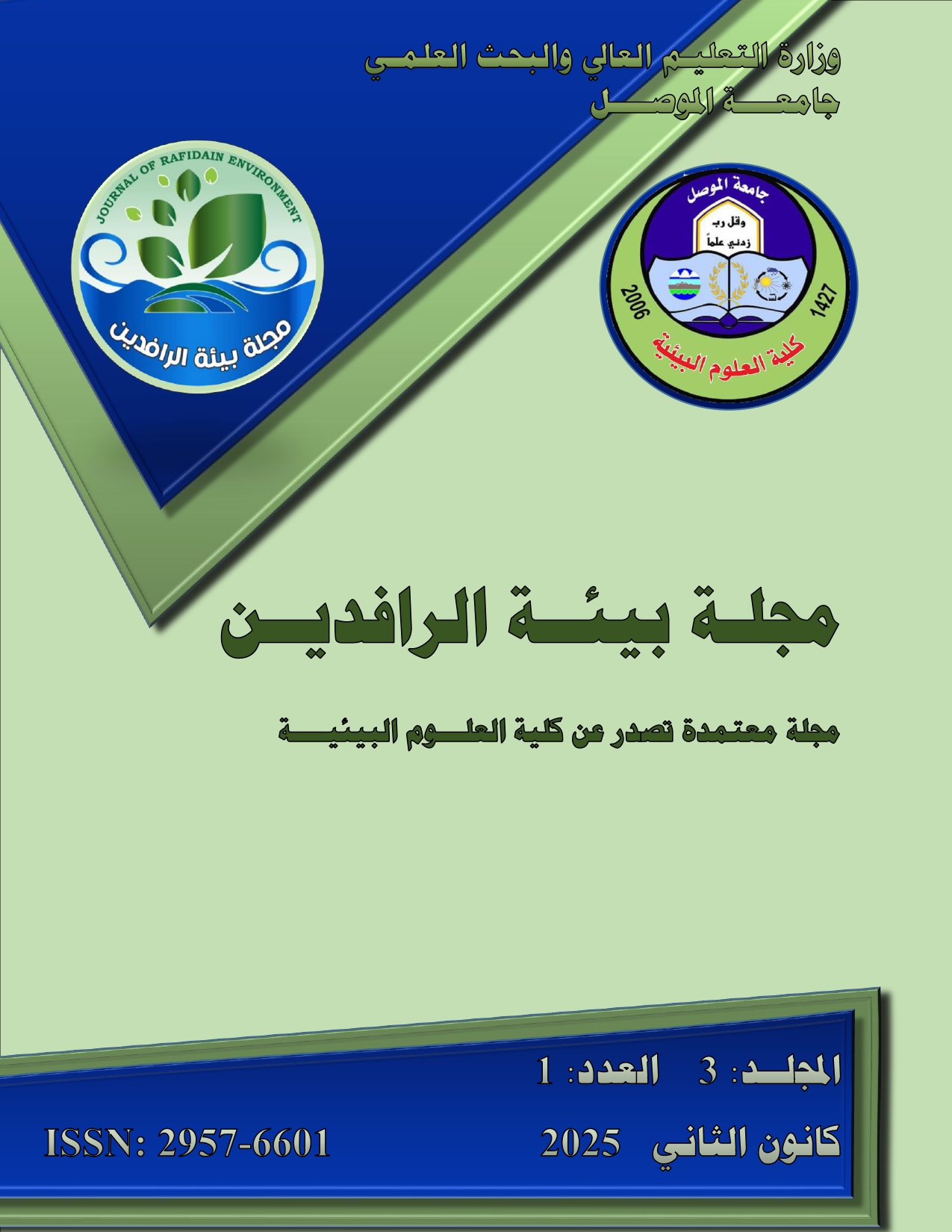Geo-environmental Impact of Gypsum Quarries in Almulawatha area within Nineveh Governorate, northern Iraq

Published
Oct 6, 2025Pages
93-105Abstract
The increase in demand for building materials and stones in recent years has led to the expansion of random quarrying. Therefore, the current study highlights the environmental impact of gypsum rock quarries in the Almulawatha area in Nineveh Governorate, northern Iraq. The aims of the study are to evaluate the gypsum rocks of the Fatha Formation within Nineveh Governorate, specifically in Almulawatha area, where the rocks were evaluated environmentally and engineeringly to demonstrate their suitability for various uses. As well as studying the impact of rock quarrying and the environmental and geological problems it causes. This study focused on the environmental and geological impact resulting from these quarries.
Field surveys and field studies were conducted to determine the field physical and geotechnical properties of the region's rocks, in addition to sampling them for the purpose of laboratory study to determine their engineering properties. Field observations and satellite images monitoring have shown the massive expansion of random quarrying operations in the environment of the study area in terms of the spread of large holes and high rock cuts, which will ultimately lead to the formation of swamps and the occurrence of rock slides. It was also noted that all types of extracted rocks are used in the plaster industry, and this has a major negative impact, as the use of the erosion-resistant type in the plaster industry is considered an economic waste. Moreover, the erosion-resistant type is also characterized by the presence of textile veins in it, which gives it an aesthetic appeal when used for packaging purposes. The study area is a low hills, and as a result of the spread of quarrying operations, it has an unclear topography due to the absence of well-studied scientific plans, and the quarrying work being limited to the easiest and cheapest quarrying methods, which has led to a significant distortion of the region’s environment.
References
- Abood. M. R. and Najim, N. S., (2013) Measuerment of thermal conductivity of gypsum rocks in fatha formation / fatha area, and Using an insulations for Wall enveloping, Tikrit Journal of Pure Science , vol(18), n(1), pp. 221-225.
- Al-Abbasi, M. W. (2005) Biostratigraphy and Palaeoecology throghout the U. Eocene – M. Miocene successions in Ain Safra and Bashiqa anticlines / N. Iraq. Unpublished M.Sc. thesis, University of Mosul.
- Al-Alawi, M. N. T. (1980) Structural study of upper Cretaceous and Tertiary Succession in Jebal Bekhir, Dohuk area, north Iraq. Unpublished M.Sc. thesis, University of Mosul.
- Al-Asadi, M. M. (2002) Biosrtatigraphical and Sedimentological Study of Fat Ha Formation S-Nw Mosul. Unpublished M.Sc. thesis, University of Basrah.
- Al-Juboori, N. S. (2009) Geotechnical and Mining Evaluation for Gypsum Rocks in Fatha Formation and Their Suitability for Thermal Insulations in Fatha Area/ North Iraq. M.Sc. thesis, University of Tikrit.
- Al-Kadhimi, J.M.A., Sissakian, V.K., Sattar, A.F. and Deikran, D.B. (1996) Tectonic Map of Iraq. 2nd Edition, Geo Survey, Baghdad, Iraq.
- Al-Wazan, A. M. (2007) Planktonic Forminiferal Biostratigraphy of Kolosh Formation (Paleocene ) in Dohuk area North Iraq. Unpublished M.Sc. thesis, University of Mosul.
- ASTM D2845, (2012) Standard Test Method for Laboratory Determination of Pulse Velocities and Ultrasonic Elastic Constants of Rock, DOI: https://doi:10.1520/D2845-08.
- Bellen, R.C. Van, Dunnington, H.V., Wetzel, R. and Morton, D.M., (1959) Lexique stratigraphique international asia, Fascicule, 10a, Iraq, Centeral National deal Recherches Scientifique, Paris, 333P.
- Carmichael, R.S., (2018) Practical Handbook of Physical Properties of Rocks and Minerals, CRC Press, 756 P.
- Franklin, J. A., and Chandra, R. (1972) The slake-durability test. International Journal of Rock Mechanics and Mining Sciences and Geomechanics Abstracts, 9(3), 325–328.
- Gosling, F. and Bolton, T. (1959): The geology of Jabal Kand, Unpublished Geological report 222, Iraq Petroleum Company Limited, 40p.
- ISRM, (1977) Suggested methods for determining water content, porosity, density, absorption and related properties, Part I, pp. 143-151.
- ISRM, (1979) Suggested Methods for Determining Compressive Strength and Deformability of Rock Materials, International Journal of Rock Mechanics and Mining Science and Geomechanics Abstracts, pp. 137-140.
- ISRM, 1978 ISRM, 1978a. Suggested method for petrographic description of rocks, International Journal of Rock Mechanics and Mining Science and Geomechanics Abstracts, pp. 43-45.
- Saleh, D.Gh., Al-Jawadi, A.S. and Al-Omari, A.A., (2023) Engineering Assessment and Recycling of Building Stones Produced from the Destroyed Buildings in Old Mosul City, Iraqi Geological Journal, 56 (2A), pp. 275-282, https://doi:10.46717/igj.56.2A.21ms-2023-7-30.
- Sissakian, V. K., Hagopian, D. H., and Hasan, E. A. (1995). Geological Map of Al-Mosul Quadrangle, Sheet No. NJ-38-13 (1: 250,000). GEOSURV Library.
Identifiers
Download this PDF file
Statistics
Copyright and Licensing

This work is licensed under a Creative Commons Attribution-NonCommercial 4.0 International License.